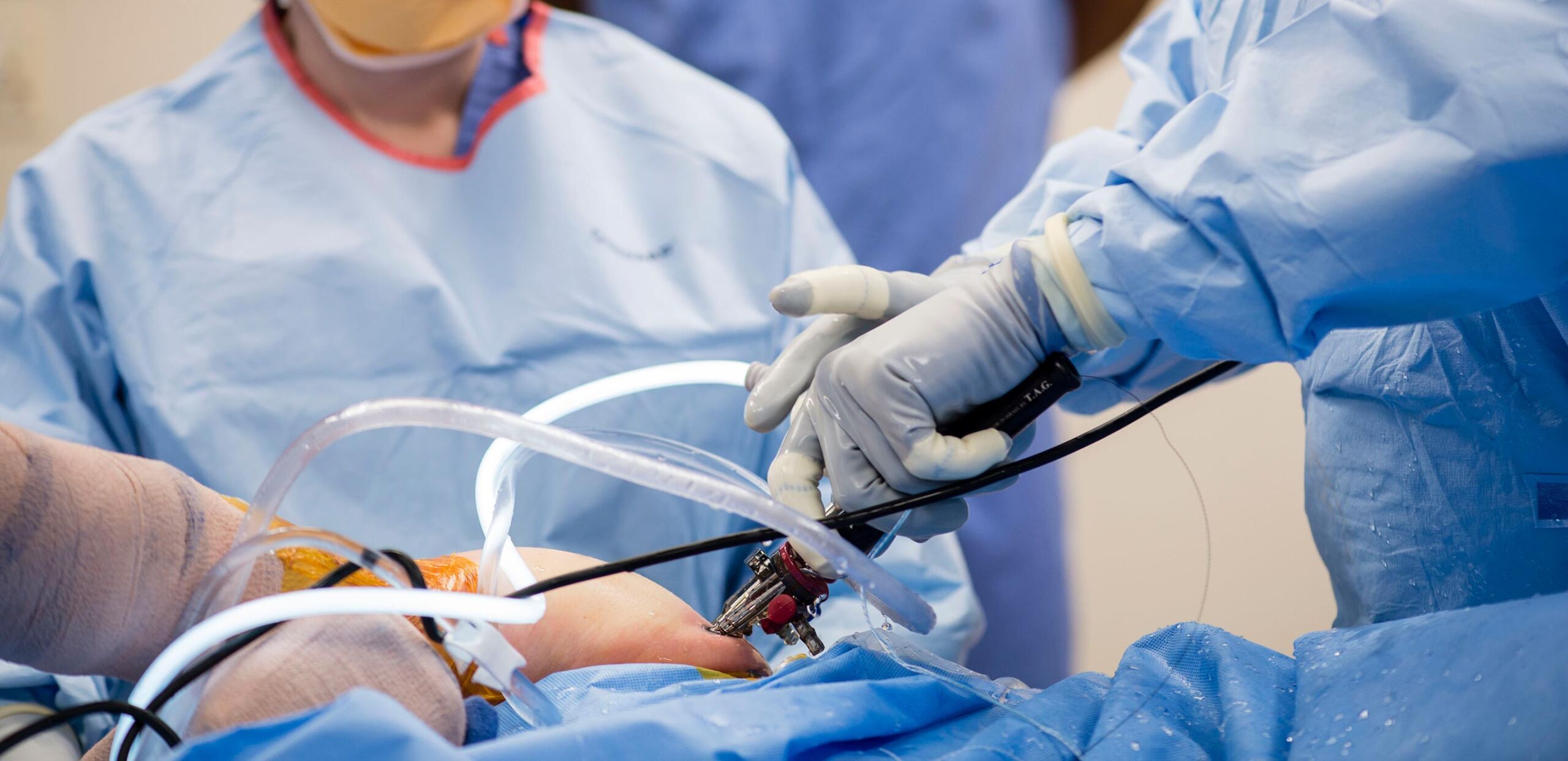
Life is unpredictable, and while most days unfold without major incident, the sudden impact of a severe accident or injury can instantly alter its course. When these events result in significant damage to the musculoskeletal system—the intricate framework of bones, joints, ligaments, muscles, and tendons that gives our bodies shape, support, and movement—a highly specialized branch of medicine steps in. This is the realm of orthopedic trauma surgery, a field dedicated to addressing the most complex and critical injuries affecting the body’s structural components. It’s not merely about mending broken bones; it’s about meticulously reconstructing shattered limbs, stabilizing compromised joints, and preserving limb function and, often, life itself. Unlike elective orthopedic procedures, which are planned well in advance, orthopedic trauma surgery operates on an emergency basis, responding to acute injuries that demand immediate, expert intervention. Understanding what is orthopedic trauma surgery involves recognizing its rapid, high-stakes nature and the profound skill required to navigate situations where split-second decisions can dictate long-term outcomes for patients.
Defining Orthopedic Trauma: Beyond Simple Fractures
To truly grasp this specialty, one must begin by defining orthopedic trauma, which extends beyond simple fractures. Orthopedic trauma encompasses severe injuries to the musculoskeletal system that typically result from high-energy events like motor vehicle accidents, falls from significant heights, industrial accidents, or sports injuries with extreme force. While a simple fracture (a break in a bone) can be managed by a general orthopedic surgeon, trauma cases often involve complex fractures (e.g., comminuted fractures where the bone shatters into multiple pieces, open fractures where the bone pierces the skin), multiple fractures, joint dislocations, damage to surrounding soft tissues (muscles, ligaments, tendons, skin), and sometimes even nerve or vascular injury. These injuries are often life- or limb-threatening, demanding immediate attention to stabilize the patient and prevent further damage. The complexity and multi-system involvement in these cases differentiate them significantly from routine broken bones, emphasizing that orthopedic trauma fundamentally deals with conditions far beyond simple fractures.
The Scope of Orthopedic Trauma Surgery: A Broad Spectrum of Injuries
The practical application reveals that the scope of orthopedic trauma surgery covers a broad spectrum of injuries. Orthopedic trauma surgeons are adept at treating fractures of all types and locations, from simple breaks in fingers or toes to devastating fractures of the pelvis, spine, or multiple long bones (femur, tibia, humerus). Their expertise also extends to complex joint injuries, including severe dislocations and intra-articular fractures (breaks that extend into the joint surface). They manage non-unions (fractures that fail to heal) and malunions (fractures that heal in a deformed position), often requiring revision surgeries. Open fractures, where the bone is exposed to the outside environment, are particularly challenging due to the high risk of infection, demanding immediate surgical debridement and stabilization. Damage to surrounding soft tissues—muscles, tendons, and ligaments—also falls within their purview, as these injuries can severely impact limb function if not addressed. This broad spectrum of injuries highlights that the scope of orthopedic trauma surgery is comprehensive, covering virtually any severe injury to the musculoskeletal system.
Specialized Training: A Focus on Complex Anatomy and Urgent Care
The nature of these injuries demands specialized training, with a focus on complex anatomy and urgent care. After completing a general orthopedic surgery residency, an aspiring orthopedic trauma surgeon undergoes an additional one or two years of fellowship training. This intensive period hones their skills in managing severely injured patients, often in Level I trauma centers. They gain deep expertise in advanced fracture fixation techniques, including the use of complex plating systems, intramedullary nails, and external fixators for temporary or definitive stabilization. Crucially, they learn how to address complex soft tissue injuries, manage open wounds, and handle potential vascular or nerve compromise. A significant part of their training involves understanding surgical priorities in polytrauma patients (those with multiple severe injuries) and making rapid, critical decisions in high-pressure, emergency settings. This focus on complex anatomy and urgent care fundamentally defines the specialized training that sets these surgeons apart.
The Trauma Team: Collaboration in Life-Saving Scenarios
Orthopedic trauma surgeons rarely work in isolation; they are integral members of the trauma team, requiring close collaboration in life-saving scenarios. In a Level I trauma center, they work hand-in-hand with emergency physicians, general surgeons, neurosurgeons, vascular surgeons, intensivists, and rehabilitation specialists. Upon arrival of a severely injured patient, the trauma team rapidly assesses life-threatening injuries, stabilizes the patient, and then prioritizes treatment. The orthopedic trauma surgeon’s role is often limb-salvage or stabilizing large bone fractures to control bleeding and prevent further systemic compromise. Their decisions must be integrated with those of other specialists to ensure the patient’s overall well-being. This seamless collaboration in life-saving scenarios underscores that the trauma team approach is fundamental to managing polytrauma patients, where every specialty contributes to a coordinated effort to save life and limb.
Fracture Fixation Techniques: Restoring Skeletal Integrity
A core competency of the orthopedic trauma surgeon lies in mastering diverse fracture fixation techniques for restoring skeletal integrity. The method chosen depends on the type, location, and severity of the fracture, as well as the patient’s overall condition. Common techniques include:
- Open Reduction Internal Fixation (ORIF): Involves surgically opening the skin to realign (reduce) the broken bone fragments and then securing them with internal hardware such as plates, screws, rods (intramedullary nails), or wires.
- External Fixation: Used for complex, open, or highly comminuted fractures, or when the patient is too unstable for definitive internal fixation. Pins are placed into the bone outside the body and connected to an external frame, stabilizing the fracture temporarily or definitively.
- Minimally Invasive Plate Osteosynthesis (MIPO): Utilizes smaller incisions and specialized instruments to slide plates under the skin, reducing soft tissue disruption and improving healing.
- Intramedullary Nailing: A rod is inserted into the hollow center of a long bone (e.g., femur, tibia) across the fracture site, providing strong internal support. These techniques aim not only to put the bones back together but to hold them rigidly enough to allow biological healing, ultimately restoring skeletal integrity.
Damage Control Orthopedics: Prioritizing Life Over Limb
In the most critical situations, damage control orthopedics becomes paramount, prioritizing life over limb. When a patient arrives with multiple life-threatening injuries (polytrauma), the orthopedic trauma surgeon may perform initial, temporary stabilization of fractures rather than definitive, lengthy surgery. This “damage control” strategy aims to quickly control bleeding, stabilize major fractures to prevent further systemic shock, and reduce the risk of infection in open wounds. Definitive surgery is then delayed until the patient’s physiological condition has stabilized, often in an intensive care unit (ICU) over several days. This approach prevents prolonged operating room time and minimizes additional physiological stress on an already critically injured patient. Prioritizing life over limb through damage control orthopedics is a strategic decision that saves lives by ensuring the patient is stable enough to withstand more extensive, definitive repairs later.
Limb Salvage vs. Amputation: Difficult Decisions in Extreme Cases
One of the most challenging aspects of the field involves the dilemma of limb salvage vs. amputation, requiring difficult decisions in extreme cases. In situations of severe limb trauma—such as crush injuries, degloving injuries (where large sections of skin and soft tissue are torn away), or injuries with significant neurovascular compromise—the surgeon must assess the viability of the limb. Factors considered include the extent of soft tissue damage, the condition of major nerves and blood vessels, the potential for infection, and the long-term functional outcome. While the default is always to save a limb, there are instances where amputation might offer a better quality of life, faster rehabilitation, and a lower risk of life-threatening complications. These are profoundly sensitive conversations with the patient and family, often involving multiple specialists. Making difficult decisions in extreme cases for limb salvage vs. amputation underscores the high stakes and ethical considerations inherent in orthopedic trauma surgery.
Post-Surgical Rehabilitation: A Long and Demanding Journey
The surgery itself is just the beginning; post-surgical rehabilitation marks a long and demanding journey. Once the immediate surgical phase is complete and initial healing begins, patients transition to intensive physical and occupational therapy. This is crucial for regaining strength, range of motion, and functional independence. The rehabilitation program is highly individualized, progressing from gentle exercises to weight-bearing activities, balance training, and eventually, sport-specific or work-specific movements. Patients often face challenges like pain, stiffness, muscle weakness, and psychological hurdles. Adherence to the prescribed therapy is paramount for optimizing outcomes and preventing complications like joint contractures or re-injury. The success of the surgery is profoundly linked to the quality and commitment to this long and demanding journey of post-surgical rehabilitation, transforming a repaired limb into a functional one.
Managing Complications: A Constant Vigilance
Even with the most skilled surgery and diligent rehabilitation, managing complications is a reality, requiring a constant vigilance. Orthopedic trauma patients are at higher risk for various complications due to the severity of their injuries. These can include:
- Infection: Especially in open fractures, requiring aggressive antibiotic treatment and sometimes further surgery.
- Non-union or Malunion: When fractures fail to heal or heal in a misaligned position, potentially requiring revision surgery.
- Compartment Syndrome: A dangerous condition where swelling within a muscle compartment cuts off blood supply, requiring immediate surgical intervention (fasciotomy).
- Nerve or Vascular Damage: Can be an initial injury or a complication of surgery, potentially leading to long-term deficits.
- Post-Traumatic Arthritis: Long-term risk, especially with intra-articular fractures. This constant vigilance in managing complications is a continuous part of the orthopedic trauma surgeon’s role, from the operating room through long-term follow-up.
The Ultimate Goal: Restoring Function and Quality of Life
Ultimately, every intervention and decision in orthopedic trauma surgery is driven by the ultimate goal: restoring function and quality of life. While saving a limb or life is the immediate priority, the long-term objective is to enable patients to return to their highest possible level of activity and independence. This means not just healing bones but ensuring joints move properly, muscles regain strength, and nerves function adequately. It’s about empowering individuals to return to work, hobbies, sports, and daily activities that define their lives. This comprehensive approach, moving beyond the operating room to encompass rehabilitation and long-term care, ensures that restoring function and quality of life remains the ultimate goal for every patient undergoing orthopedic trauma surgery.
